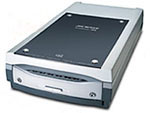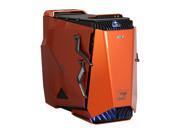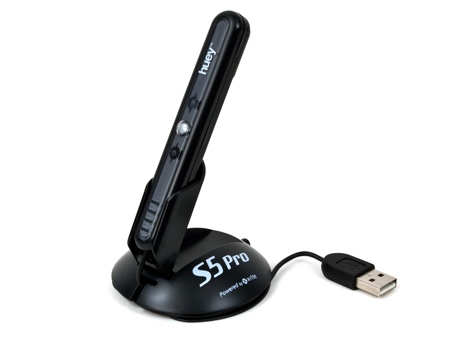
Dell S2409W Review
Reviewed by: Eric Franklin
Reviewed on: 3 April 2009
If you're looking for a low-price 24-inch
monitor, the 1080p Dell S2409W will serve you well. For around £200, the S2409W gives you VGA, DVI and HDMI connections, great performance with games and movies, and an intuitive and elegantly designed on-screen display that offers a plethora of useful options.
Compared with the £400, 24-inch
UltraSharp 2408WFP, the S2409W has fewer connection options and ergonomic features. Still, if price is your focus, the S2409W provides good value for money. The
BenQ E2400HD is available for about the same price, but has slightly worse performance and fewer on-screen display (OSD) options.
DesignThe S2409W's bezel is a striking, glossy black that reflects everything. The bezel measures a short 19mm wide on all sides. The panel is nearly an inch deep, which is thin for a 24-incher. A thin, 1cm strip wraps around the outer edge of the panel, bringing the panel width to 23 inches -- about average for a monitor of this screen size.
The circular footstand is nearly 9 inches in diameter and, unfortunately, doesn't provide the type of stability we expect -- it doesn't take much lateral force to wobble the whole display.
To achieve a low price tag for the S2409W, Dell has skimped on a few ergonomic features, including screen height adju

stment, rotation and pivoting. The screen tilts back 20° and forward 5°, but that -- and a hole in the display's neck through which to route your cables -- is all you get.
The S2409W's connection options include VGA, DVI and HDMI. Although the VGA and HDMI ports are easy to reach, the DVI port sits slightly too near the display's neck, making it awkward to connect the cable.
Buttons for the OSD are located on the bottom right-hand side of the bezel. There's a menu button, up button, down button and an enter button. Calibrating the display using the OSD in a lit room where you can see the labels is simple and easy, but the buttons are separated only by a sliver of space, so it's difficult to tell where one button begins and another ends.
FeaturesIf you'd rather not deal with the sometimes headache-inducing process of calibration, the OSD includes nine preset modes. We found the 'standard' preset best for movies. The 'movie' preset's picture is overtuned, and details that should look smooth look bumpy. The 'game' preset, however, lives up to its name, proving better than the standard preset for games.
The screen tilts back 20° and forward 5°, but that's about all the ergonomic features you get
The OSD interface is the same one that Dell started using with the
Crystal. It's an elegant and intuitive interface that includes the usual brightness, contrast and colour controls, but also some that directly affect the OSD, like a menu timer and options for modifying the level of transparency.
The S2409W features a 16:9 aspect ratio, which supports a 'Full HD' resolution of 1,920x1,080 pixels.
PerformanceWe tested the S2409W with its DVI connection. The display posted a composite score of 87 in our
DisplayMate-based performance tests, compared with the E2400HD's score of 85. The two displays put in a similar performance in most of the DisplayMate test screens, but the S2409W scored slightly better in our colour-tracking tests, as it exhibited no noticeable compression or expansion at the dark or light ends of the colour scale.
A colour-tracking error occurs when the intensity of red, green and blue doesn't adjust identically with signal-level changes. During two colour tests -- 'low saturation colours' and '64-256 intensity colour ramp' -- the E2400HD showed clear signs of expansion at the light end of the scale, while the S2409W displayed the colours in the scale smoothly.
The S2409W posted a brightness score of 242cd/m2 in our test -- lower than the 300 maximum claimed by Dell. The E2400HD barely bested that score, with a 246 brightness rating. We measured the S2409W's contrast ratio as 1,001:1 -- virtually the same as Dell's claimed ratio of 1,000:1. This beats the E2400HD's 892:1 contrast ratio by more than 100.
We were in for a huge surprise when we played World of Warcraft on the S2409W. Running at a resolution of 1,920x1,080 pixels, it looked crisp, colourful and pretty near perfect. Unfortunately, viewing the game from a lower-than-optimal viewing angle made the screen darken to the point that graphic details of the game could not be seen.
The S2409W's performance when we watched our favourite Kill Bill: Vol. 1 scenes was virtually identical to that of the E2400HD. Colours were vibrant, but didn't have the same kind of pop as we saw on the
Apple LED Cinema Display. The blacks were deep without losing any dark details in dark scenes. We didn't notice any streaking or ghosting, and the screen remained sharp.
The 1080p Blu-ray version of House of Flying Daggers looked great for the same reasons stated above. We didn't, however, notice any quality advantage as a result of the screen's 16:9 aspect ratio.
Brightness (in cd/m2)(Longer bars indicate better performance)
Dell UltraSharp 2408WFP
452
HP w2408h434
Lenovo ThinkVision L2440x286
BenQ E2400HD
246
Dell S2409W
242
Samsung SyncMaster T240HD 217
Contrast(Longer bars indicate better performance)
Dell S2409W
1,001:1
BenQ E2400HD
892:1
Dell UltraSharp 2408WFP
891:1
HP w2408h
858:1
Samsung SyncMaster T240HD
815:1
Lenovo ThinkVision L2440x
810:1
Performance(Longer bars indicate better performance)
Dell UltraSharp 2408WFP
90
Lenovo ThinkVision L2440x
88
Dell S2409W
87
Samsung SyncMaster T240HD
87
BenQ E2400HD
85
HP w2408h
85
ConclusionThose seeking a 24-inch, 1080p monitor at a low price will probably be satisfied with the Dell S2409W. Ergonomic features have been sacrificed to keep the price down, but the S2409W's performance is great.
Additional editing by Charles Kloet.







































